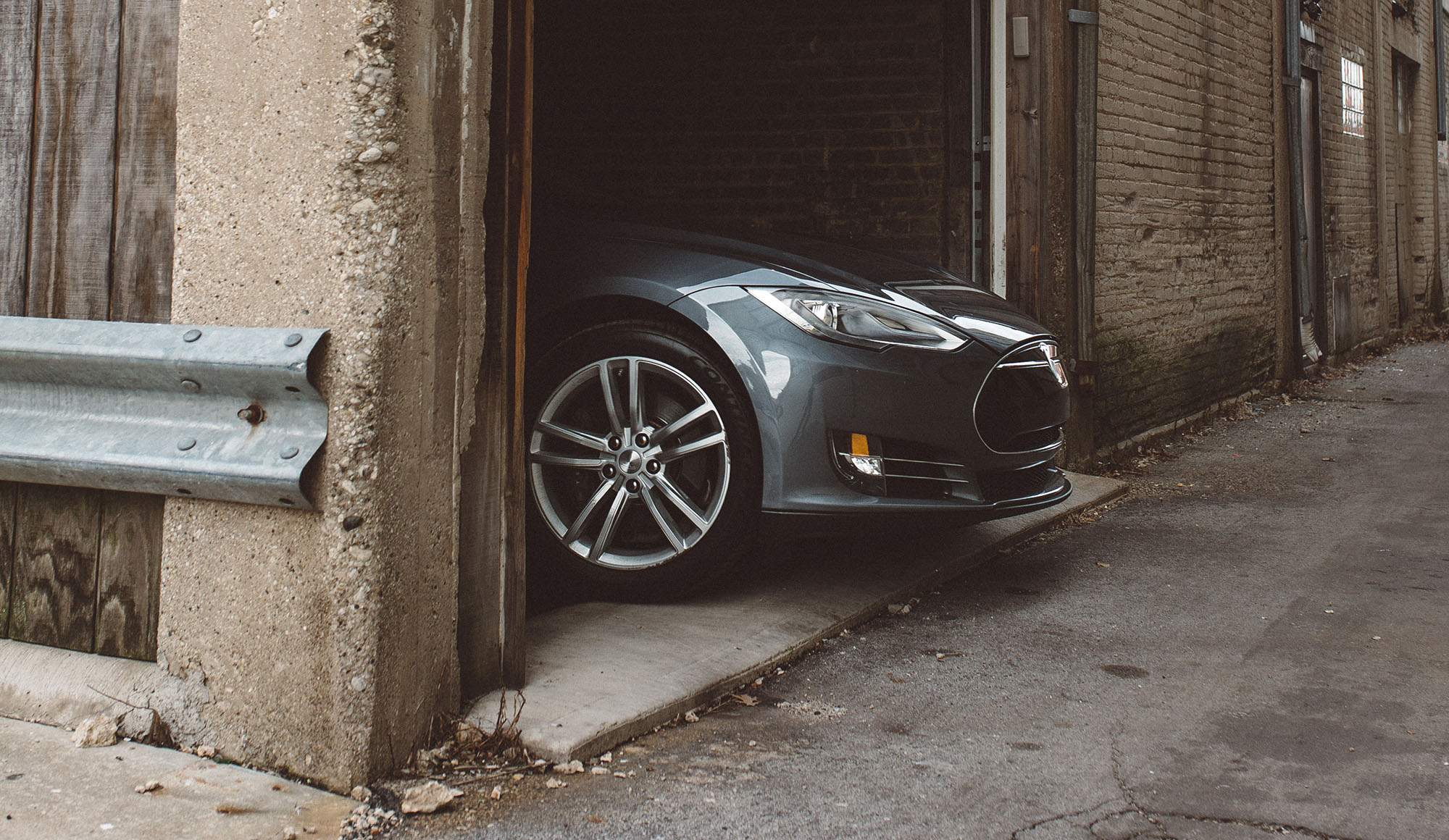Introduction
Turn your roof into a powerplant, harnessing the energy of the sun! Install it for less than traditional clay tile roofing! Warranty lasts for infinity years! It's the best thing since sliced bread, and better as a roofing material!
Take a deep breath. Tesla's very good at this superlative marketing thing. And -- spoiler alert -- the solar roof is pretty cool. But there are some things to consider before you climb up on your roof with a hammer and nails. Er, wiring harness. Er, batteries? Hang on. Let's talk it through.
Above: Photo by Karsten Würth on Unsplash
Below: Photo by Thom Oudhuis on Unsplash
Above: Photo by Karsten Würth on Unsplash
Below: Photo by Thom Oudhuis on Unsplash
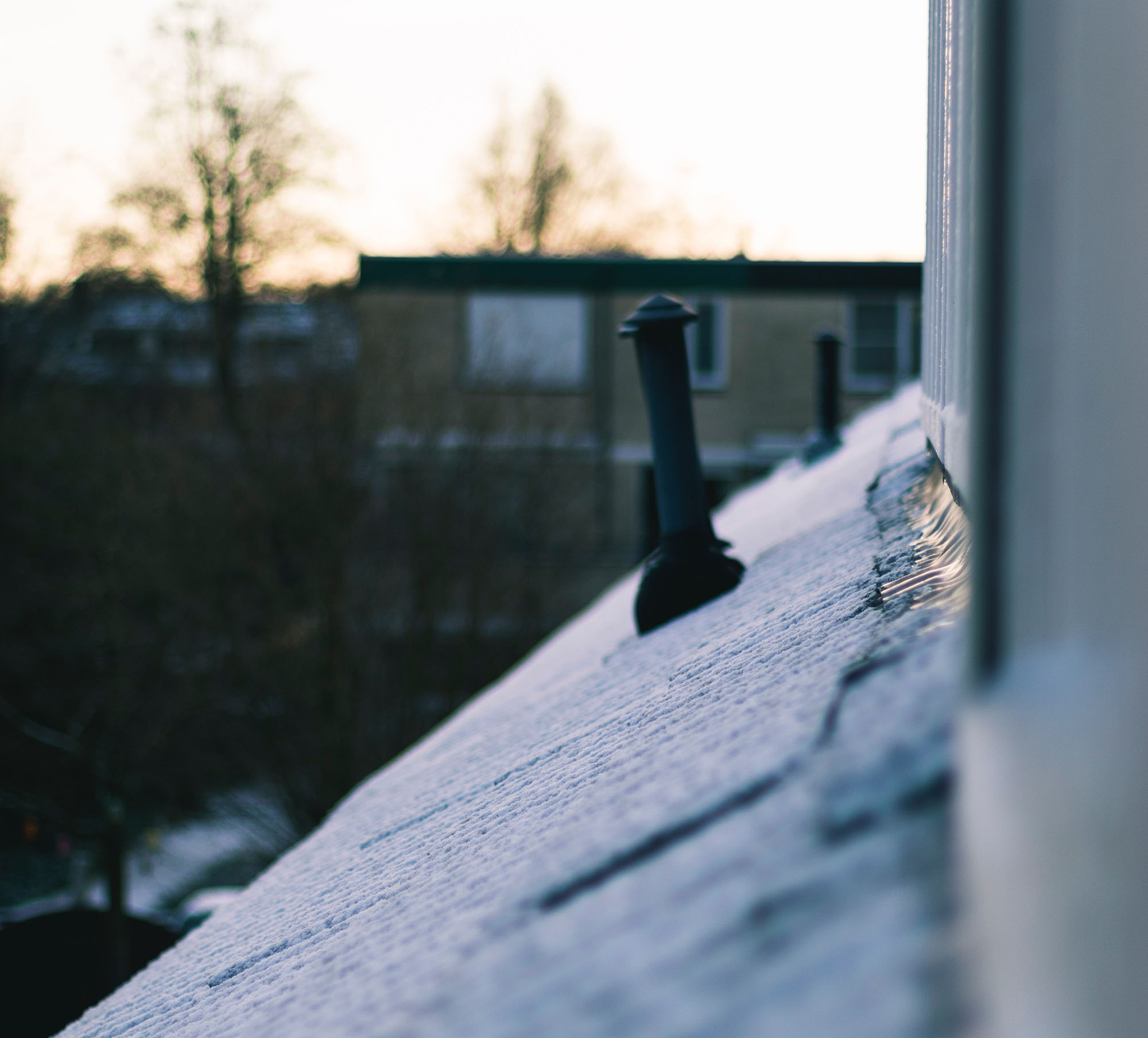
Questions? Comments.
I'm confused! What are you talking about?
You know Tesla? The company that makes awesomely cool but questionably reliable cars? They're manufacturing roofing now. But it's not roofing that only does what roofing has ever done since we left the caves (i.e., keep your stuff dry); it's roofing which keeps your stuff dry AND includes solar cells to generate power. They promise that the roof will pay for itself by generating electricity.
How massively disruptively original!
Nope. Other companies have developed and marketed similar systems for a while now: CertainTEED, Suntegra, Atlantis, Dow, and others have had systems. Only the first two are still in business, although I've probably missed someone. It's a constantly changing field because it's really, really hard to make things work. Tesla's roof certainly looks the coolest, though. In the renderings. They're really nice renderings.
You sound sort of skeptical. Are you not a believer?
I usually sound skeptical, to be fair. And it's not that I'm not a believer -- it's just clear to this architect that this is a massively complex thing to achieve with many more considerations than the fairly thin marketing material would have you believe. They're selling this to you, after all. Do you usually take salespeople at face value?
I do not. Let's dig a little deeper.
I do not. Let's dig a little deeper.
Below: Solar roof rendering by Tesla, from their website at https://www.tesla.com/solarroof
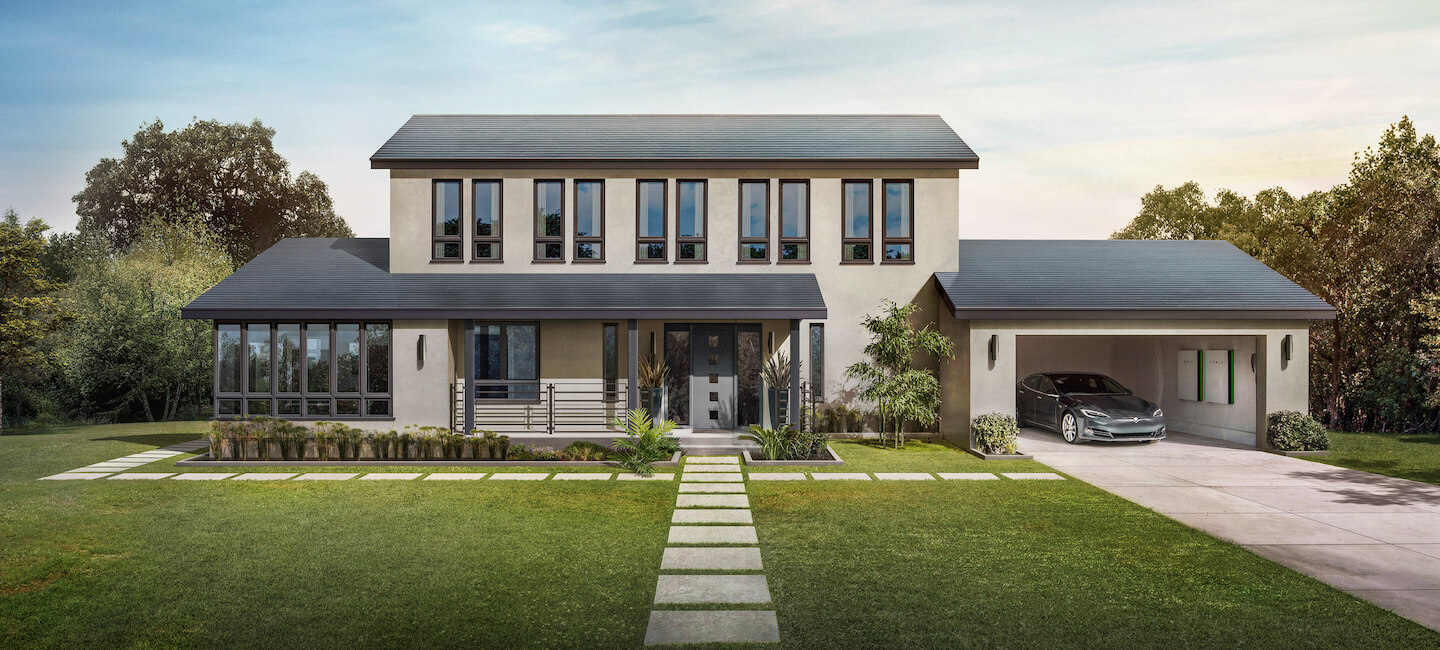
Run the Numbers
We will walk through it, using my house as an example. First, Tesla (through the agency of Google's Project Sunroof) estimates how much energy your roof can produce: $53,800 for me, with 50% of the roof covered. They then give you an estimate of the cost of the roof -- $72,200 for mine -- plus the cost of the recommended Tesla Powerwall batteries, which helps smooth out the lumpiness of when energy is produced and when you need it (another $12,500). They subtract tax credits ($20,900; thanks Obama) and net out the 30-year cost after subtracting an estimate of your monthly electric bill ($149, which is higher than mine, but we'll roll with it). The net-net-net is, drumroll please: $10,000. Exactly what my new roof cost to put on six months ago.
Well, that's a fail if you're looking for a free roof. But we're helping the environment, so that's a win. And increasing the percentage of the roof covered from 50% to 70% drops the net cost to $6,600 (with an increase to the total installed cost to $107,100) because it generates more energy. So, conditional win, right? Ready to pull the trigger?
Not so fast. There are other things you need to think about, ranging from technical to financial. Financial first.
Below: Photo by Echo Grid on Unsplash. This is slate, in case you're wondering. You can't afford it, in case you're wondering.
Below: Photo by Echo Grid on Unsplash. This is slate, in case you're wondering. You can't afford it, in case you're wondering.
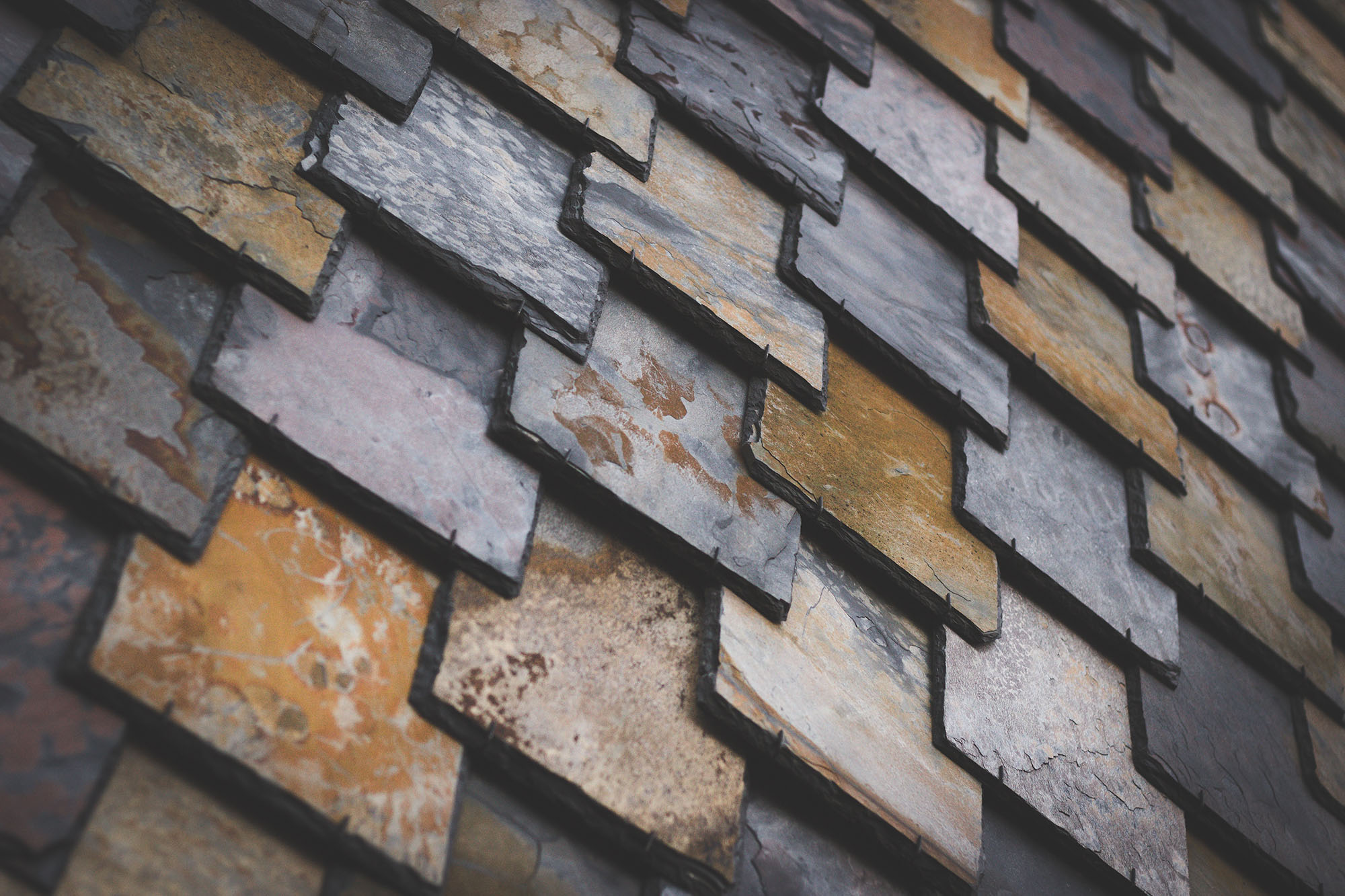
Financial
We'll use the 70% coverage numbers from above. Those are:
$89,100 initial roof cost
$18,000 battery cost
minus $29,400 tax credit
minus $71,100 in energy produced over 30 years
yielding a $6,600 net cost over 30 years
Versus a $10,000 asphalt shingle roof (my actual, real-life cost from late 2016) or a $35,000 clay tile roof (my professional estimate).
Do YOU have $107,100 sitting around ready to burn on a new roof? If yes, great. If not, you're going to have to borrow the money.
Here's the thing: it costs money to borrow money. The corollary of that is that having money (stored correctly, not under your bed) MAKES you money. When you're calculating up the true cost of this fancy roof, you need to take those two cases into consideration. So let's do.
You have to borrow the money
Let's assume you can get a loan against the equity you've got in your house. Interest rates on those types of loans are running about 4.75% if you have stellar credit. Good job with your credit, by the way. Over 15 years (a standard term for home equity loans), that will cost you about $43,000. I'm not going to tackle a true lifecycle analysis here, which would also account for being able to invest dollars saved in electric bills and similar things, but just know that your true cost isn't $6,600. It's probably more like $30-35,000 once you account for all of those variables. So you can buy a Tesla roof, or a shingle roof AND a new car.
You have the money
Money makes money. What can you do with the the $97,100 differential that the solar roof costs? You would have turned it into $235,000 if you had invested it in a CD returning 3% over your 30-year horizon instead of buying an expensive roof.
Below: Photo by Samuel Zeller on Unsplash. Yeah, you can afford this one.
Below: Photo by Samuel Zeller on Unsplash. Yeah, you can afford this one.
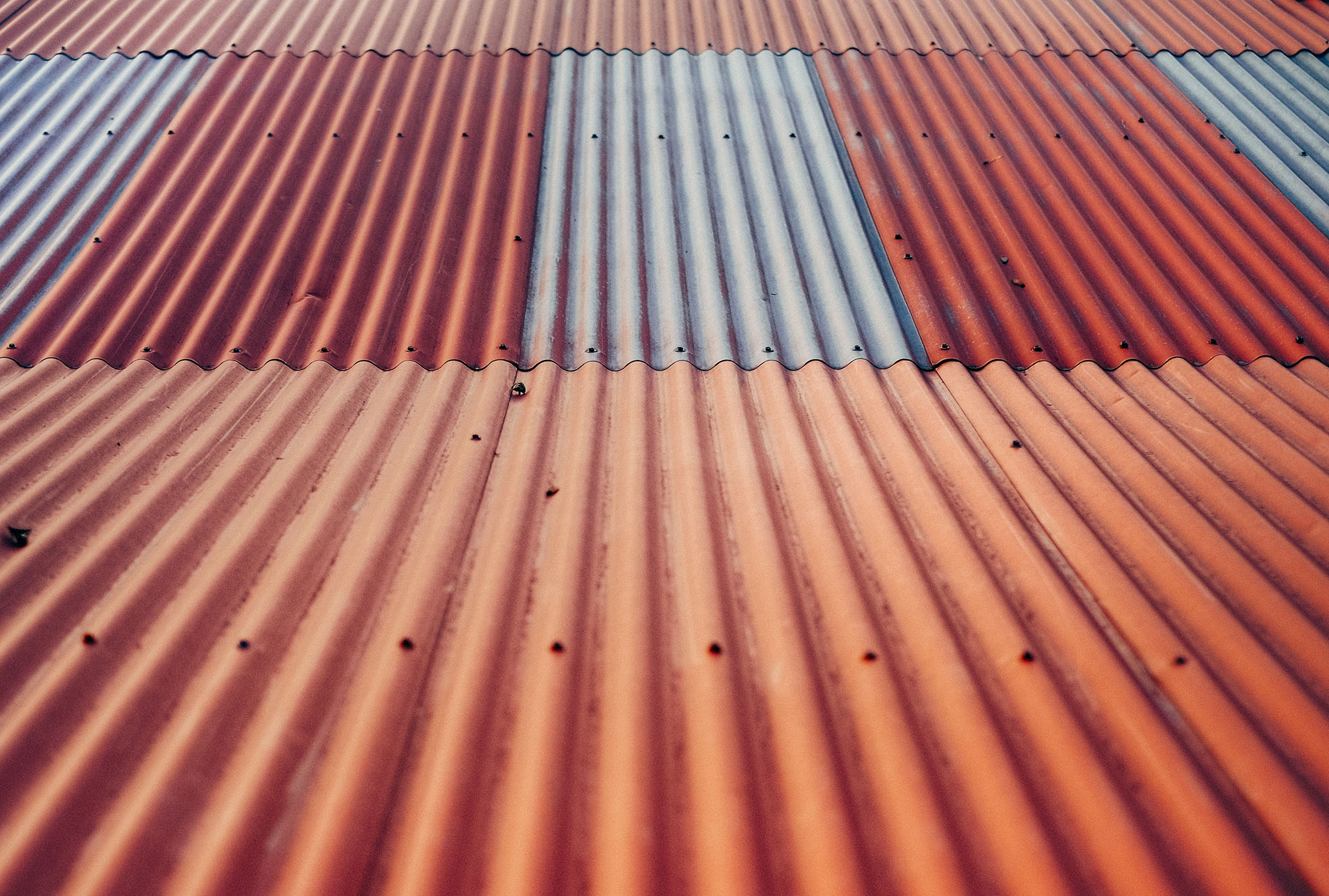
Other considerations
The specifics of your house are very significant factors in how well this works out for you. We've used my house in San Antonio -- one of the better places for solar in the country -- as an example. In Seattle, you're going to be bucking some headwinds. Headclouds. Whatever.
My roof is also pretty simple, which is helpful in keeping installation costs down. If your roof is more complex, with more ridges and valleys, that makes it more complicated and more expensive, and it also limits the area which can effectively support solar cells. Complicated roofs are easier to manage with shingles than with tile, solar or no, leading to increased relative costs.
Oh, and aesthetic issues might cut both ways. I live in a historic district. I probably can't do this, period, because appearance is a big issue here. If Tesla introduces cells which can more closely resemble the asphalt shingles that are characteristic of my neighborhood, maybe there's a shot. Even if you don't live in a historic neighborhood, this might be a problem for you: many homeowners' associations have quite strict rules about what kind of roofing you can install. If so, these shingles probably aren't acceptable. That's not to say that you can't get these accepted, just that you might have to work to do so.
Maintenance isn't going to be fun. Tesla has some really neat videos on their site showing just how impact resistant the tiles are, which is great. They do not, however, have really neat videos on their site showing just how easy it will be to replace an inverter. Like any product which incorporates electronics, the roofs will occasionally need to be repaired, promises of lifetime durability aside. Tesla doesn't provide an estimate of those maintenance costs. Also, like any roof, flashing and sealants are the weak link from the perspective of keeping the outside out. Those repair costs will track with most roofs, and may be higher due to specialized materials and installation.
There are lots of other details, too. If you live in an older home, you may have to reinforce your roof structure to support the Tesla roof, which is heavier than shingles. If you want your roofing to produce energy efficiently, you're going to need to wash it on a regular basis. Installation can't be done by general laborers -- it's more complicated than tacking down shingles, or even installing clay tile, so it will be more expensive and more dependent on what's going on in the labor market. You know, details.
Below: Photo by Alex Holyoake on Unsplash. I don't know if you can afford this one. Call us, and we'll talk about it.
Below: Photo by Alex Holyoake on Unsplash. I don't know if you can afford this one. Call us, and we'll talk about it.
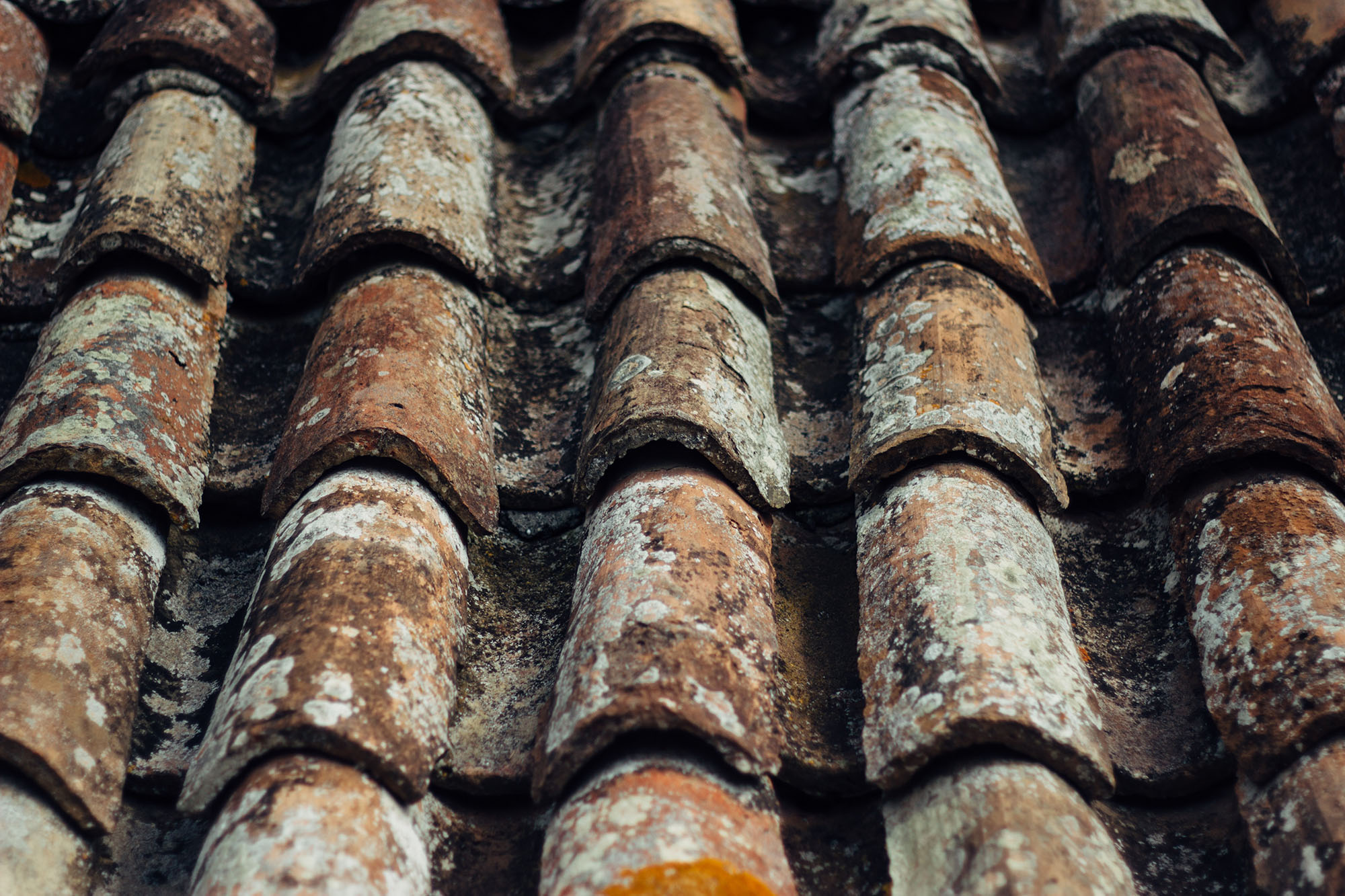
Conclusion
This really shouldn't surprise you. The Tesla roof is a lot like buying a Tesla, frankly: it's awesomely cool, it's sold as a good choice for the environment.... and it's really expensive. If you like being on the bleeding edge, and if you want something for your neighbors to gawk at, this will work about as well as putting a Tesla in your driveway. Better, because it will be quite a bit more rare. And it's likely to stay that way, given the current financials.
We aren't luddites here at Work5hop. We're a fully mobile office, for example, which is something that no other firm I know of can say. But there's a point where it makes sense to let someone else do your failure analyses, and I'd argue that solar roofs need another decade of testing, market penetration, technology development, and cost decreases to make sense for the vast majority of situations. Props to Tesla for charging ahead... but it's OK not to keep up with the Joneses quite yet on this one.
Below: Photo by Jacob Rank on Unsplash. If you can afford one, can I borrow it?
Below: Photo by Jacob Rank on Unsplash. If you can afford one, can I borrow it?
